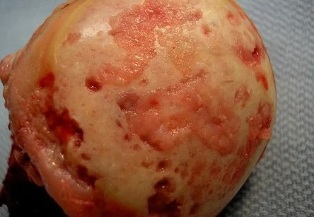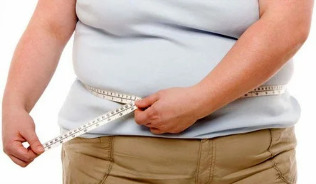Osteoarthritis is a chronic disease that affects connective tissue in the structure of musculoskeletal. For the disease the hallmark of a progressive evolution of the gradual destruction of cartilage tissue. Osteoarthritis is common in most patients over the age of 65, as one of the reasons of its development is the natural aging of the body.
The appearance of degenerated-the dystrophy of the pathology lead to previous injuries, endocrine disorders and inflammatory diseases, excess exercise, or, on the contrary, a sedentary life-style. The main symptoms of osteoarthritis are pain in the joint of his pockets, a limitation of movements.
For the diagnosis of pathology is conducted in tools for research — x-ray radiography, arthroscopy, MRI, scanner. Osteoarthritis, 1 and 2 degree of severity is treated conservatively during the taking of medication, physiotherapy and massage, THERAPY. When irreversible changes in the joints shows a surgical arthrodesis, arthroplasty.
Pathogenetic mechanisms
With osteoarthritis, changes occur, marked in the interior of the connective tissue structures. On the cartilage tissue is form of distortion of erosion, which is the cause of the destruction of the collagen fibers and the proteoglycans consist of a protein (5-10%) and glycosaminoglycans (90-95%). The result of collagen grid loses stability, begin to be called metalloproteinases, that destroy all types of extracellular matrix proteins. Destruction is accelerating thanks to the improvement of the biosynthesis of collagenase and stromelysin. Usually normal amounts of enzymes control the cytokines are small peptide information molecules. But with the progression of osteoarthritis of the concentration of these proteins is reduced, causing the release of a large number of enzymes that affect the cartilage tissue.

Proteoglycans remelted begin to absorb water molecules, which is not able to prevent it. Therefore, the excess liquid penetrates the fibers of collagen. They "swell up", lose their strength and elasticity. Qualitative and quantitative composition of the synovial fluid occur also negative changes. With osteoarthritis, as it reduces the concentration of hyaluronic acid. In hyaline cartilage stop coming in sufficient number to regenerate the amount of nutrients and oxygen. In the cartilage tissue forming foci of softening, and then there are cracks, specific necrotic growths. The bones of the head naked, start to microtraumatic with an offset relative to the other.
The causes and the triggering factors
The causes of the evolution of primary (idiopathic) osteoarthritis are not yet available. It occurs in the absence of triggering factors, so named of the theory of heredity to premature degradation of the cartilage. Secondary osteoarthritis develops as a consequence of other diseases of the joints, or a previous trauma. That may become the cause of degenerate degenerative disease:
- injuries of the joint or in close proximity to the connective tissue structures — a fracture, a dislocation, an injury to the meniscus, a partial tear of the muscles, ligaments, tendons, or their remoteness from the bone marrow of the base;
- innate dysplastic disorders of the development of the joint;
- disruption of the functioning of the glands national, disorder of the metabolism;
- rheumatism, or rheumatic fever;
- rheumatoid arthritis, reactive, metabolic, psoriatic, or gouty arthritis, arthritis;
- purulent arthritis, caused by streptococcus, epidermal gold or staph;
- tuberculosis of any localization, brucellosis, chlamydia, gonorrhea, syphilis;
- degenerate-degenerative disease, for example, dissecting The Legg.
The development of osteoarthritis predisposes the hypermobility of the joints due to a particular production of collagen. Such a current state in 10% of the inhabitants of the planet and is not considered a pathology. But the hypermobility is accompanied by weakness in the tendon and ligament of the device, which leads to frequent injuries, the peculiarity of the ankle (sprains and diseases of the ligaments, dislocations).
The reason for the onset of osteoarthritis economic sometimes violations of hematopoiesis, for example, of hemophilia. Hemarthrosis, or bleeding into the cavity of the joint, causes a deterioration of the trophic cartilage and destruction.
To the predisposing factors are advanced age, frequent of the load on the joints, in excess of the limits of their strength, overweight, surgery, hypothermia.

In the group of risk are women in menopause, people who live in unfavorable environmental conditions or by contact with toxic chemical compounds. When the deficit in the diet of foods with vitamins and oligo-elements, it creates a gradually degradation of the hyaline cartilage.
The clinical picture
The risk of oa is the absence of the symptoms of the first phase of its development. Pathology, clinically manifest gradually, the first signs appear on a considerable background of the destruction of cartilaginous tissues. In the beginning, the man feels a slight pain, has no precise location. It occurs after a physical activity — strength training, sports training. Sometimes, the first clinical manifestation is chewable, the screeches when the flexion or extension of the joint. The man begins to notice that certain movements are difficult. Moreover, the initial phase of osteoarthritis of the stiffness occurs in the morning and soon disappears.
As the progression of the disease the pain felt during the night, causing not only sleep disorders, but also by the appearance of chronic fatigue. The severity of the pain on the second phase, the increases during a change of weather, the worsening of chronic health conditions, the outbreak of SARS. Decreases the amount of movement. The reason causes stiffness is the thinning of the cartilage, but also conscious of the limitation of the person's movements in order to avoid the onset of the pain. This leads to the increase of the load to the opposite side of the joint, which causes further injury. For osteoarthritis are other specific symptoms:
- the pain causes spasms of the skeletal muscles and development of muscle contractures (restrictions of passive movements in the joint);
- a crunch in joints, pops, creaks when driving to become permanent, occur almost each movement of the bones relative to each other;
- occur often, painful muscle cramps;
- the joints become deformed, which leads to disturbances of posture and gait;
- in the third stage of osteoarthritis of the deformation is expressed so strongly, that the deformed joints, and the amount of movement in them significantly reduced or non-existent;
- with osteoarthritis of the third degree of the knee, ankle, hip ill during a trip benefits from a cane or crutches.
In the absence of treatment of the pathology progresses, and in the course of remission, followed by relapse, and the frequency of exacerbations while the time increases. The stiff movements in the morning, now, does not disappear during a long period of time, is constant.
Looking at a patient with osteoarthritis of 1 degree, the doctor finds that a low swelling of the joint and the integrity of the amplitude of the movements. The pathology of 2 degrees palpation reveals tenderness and weakly expressed by the deformation. In the area of the joint space observed the formation of bumps to the bone.
For osteoarthritis (oa) is defined by the onset of the synovitis — inflammatory drugs in the synovial tissues of the hip, knee, ankle, joints. The main symptom is the education rounded sealing in the area of the joint, the pressure that is felt on the movement of fluid (fluctuation). During acute synovitis may be accompanied by elevation of the temperature up to 37-38°C, headache, disorders of the digestion.
The diagnosis
The diagnosis presents on the basis of the results of the research tools, the characteristics of the clinical picture, anamnesis, complaints of patients. Total analysis of blood and urine a bit — all values remain within normal limits, if the osteoarthritis is not caused by the pathology metabolic. With the development of synovitis increases the erythrocyte sedimentation rate (30 mm/h), in the blood increases the level of white blood cells, fibrinogen. This indicates circulating in the body acute or chronic inflammatory. The change of the biochemical and immunological indicators occurs when secondary forms of osteoarthritis.
The most informative method of diagnosis degenerated-dystrophy pathology — radiography and direct the projection side.
| The stage of osteoarthritis according to the classification of Kellgren-Lawrence (1957) | Radiological signs of the pathology |
| Initial | The absence of radiological signs |
| The first | Indistinct, irregular narrowing of the joint space. A small flattening of the edges of the plates, the primary formation of osteophytes, or the lack of |
| The second | Expressed by the narrowing of the joint space greater than the value of the standard 2-3 times, the training of a large number of osteophytes, subchondral osteosclerosis. The emergence of the kistevidnyj by a border in the epiphyses |
| The third | The emergence expressed subchondral bone of osteosclerosis and the great of the limit value of osteophytes, a significant narrowing of the joint space |
| Fourth | Training rough massive osteophytes, almost full of the concretion of the joint space, the deformation and the o-ring epiphysis of the bone formant articulation |
If after the study of x-ray images the doctor has a doubt in the diagnosis, is appointed by the CT. And for the assessment of the state located in the vicinity of a joint, connective tissue structures, performed an MRI. When the use of a contrast in dynamics to assess the vascularity of the tissues, to determine the stage of the inflammatory process during the development of the synovitis.
The main methods of the therapy
The osteoarthritis is still an incurable disease, because there are no pharmacological drugs for the regeneration of cartilage tissue. The main task of the therapy is the tool of the progression of the pathology, the preservation of the mobility of the joint. The treatment is long, complex, with the use of local and systemic drugs. Patients should avoid severe pressure on the joint, if necessary, to limit the amount of accessory movements, orthopedic, orthopedic braces, elastic bandages information request. Patients with excess weight, you need to make adjustments in the diet to a gradual decrease of the mass of the body and follow a plan.
After achieving a remission of the patients showing the daily physiotherapy sessions. The first training session takes place under the direction of a doctor of physical THERAPY, iup the patient performs a series of exercises at home. A physical THERAPIST may be completed with the swimming, yoga, cycling.
To reduce the severity of the pain are named different medications clinico-pharmacological groups:
- nonsteroidal anti-inflammatory drugs in the form of ointments, tablets, solutions for parenteral administration with active ingredients;
- the injection in the articulation of solutions of anesthetics in combination with corticosteroids;
- muscle relaxants to resolve muscle spasms and restrictive muscle spasms.
In the regimens included are the B-group vitamins, sedatives, if necessary, tranquilizers, and antidepressants. Necessarily appointed chondroprotectors for long within of receipt. This is the only group of drugs with the capacity of conservator partially the cartilaginous tissue.
To improve their clinical activity, the procedures of physiotherapy, laser therapy, magnetic fields, UHF-therapy.
Any pain in the joints should be a signal to your doctor immediately. Therapy, performed on the initial phase of oa, will stop the destruction of the cartilage, to prevent the loss of integrity and disability.























